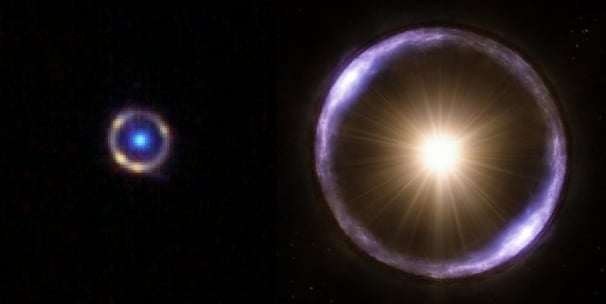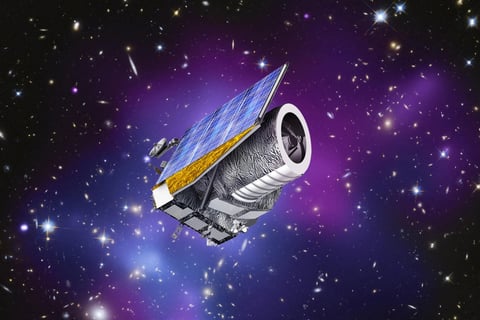A Cosmic Masterpiece: Euclid Unveils a Rare and Stunning Einstein Ring
ESA's Euclid telescope captures a breathtaking Einstein ring near galaxy NGC 6505, providing new insights into dark matter and the universe’s structure. Here’s why this rare find is a big deal.
MISCELLANEOUS
Deepita
4/6/20252 min read


In a remarkable early discovery, the European Space Agency’s Euclid telescope has captured an exceptionally clear and beautiful Einstein ring—one of the rarest cosmic alignments. This gravitational phenomenon was spotted near the galaxy NGC 6505, just 590 million light-years away, making it one of the closest and most detailed examples ever observed.
Einstein rings occur when light from a distant galaxy is warped around a nearer galaxy due to the immense gravitational pull of the latter. In this case, light from a background galaxy 4.42 billion light-years away is bent perfectly around NGC 6505, forming a complete, bright ring. This is not only visually stunning but scientifically priceless, helping astronomers study otherwise hidden galaxies and mass distribution—especially dark matter—in space.
What’s fascinating is that this galaxy has been known to astronomers since 1884, yet the ring had never been detected until now. Euclid's ultra-precise imaging has revealed it in stunning clarity, underscoring the mission's powerful potential.
This find also offers surprising insights: NGC 6505 appears to contain only 11% dark matter, lower than expected, raising new questions about how mass is distributed across galaxies.
This spectacular ring is just the beginning—Euclid is expected to identify around 100,000 such lenses during its mission, revolutionizing our understanding of the cosmos.
Euclid's Mission and Future Prospects
Launched in July 2023, the €1 billion Euclid mission aims to map the universe in 3D, observing billions of galaxies up to 10 billion light-years away. The discovery of this Einstein ring early in its mission underscores Euclid's potential to uncover many more such phenomena, enhancing our understanding of cosmic structures and the fundamental forces shaping them.
This finding exemplifies how advanced space-based observatories like Euclid are revolutionizing our comprehension of the universe, offering unprecedented opportunities to explore phenomena predicted by theoretical physics nearly a century ago.


